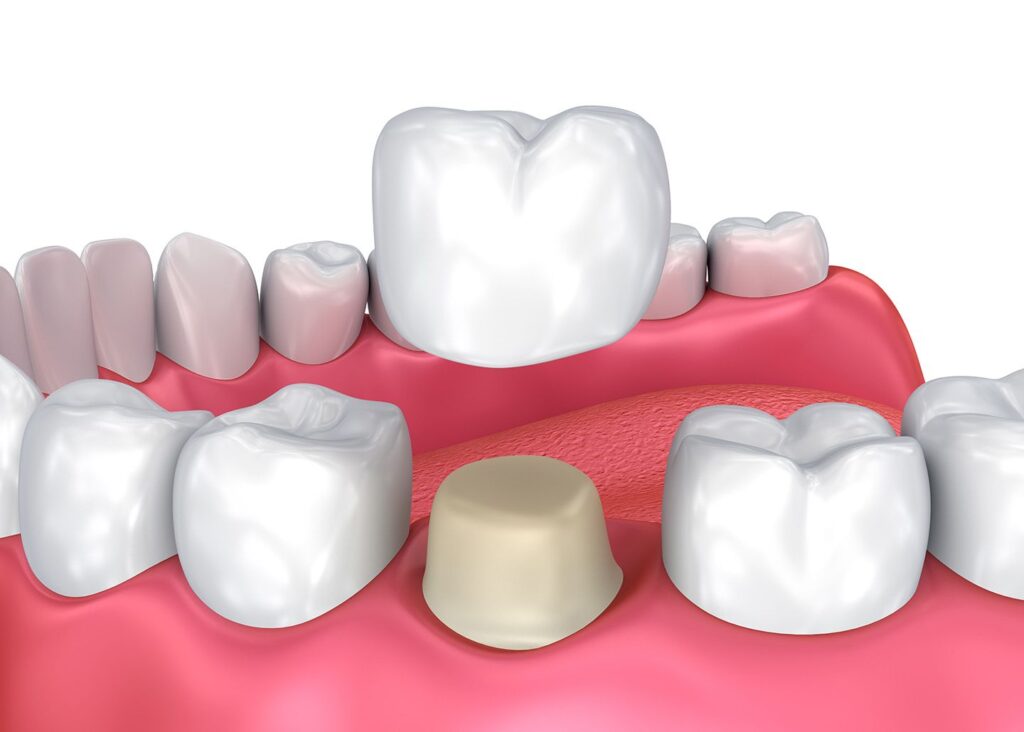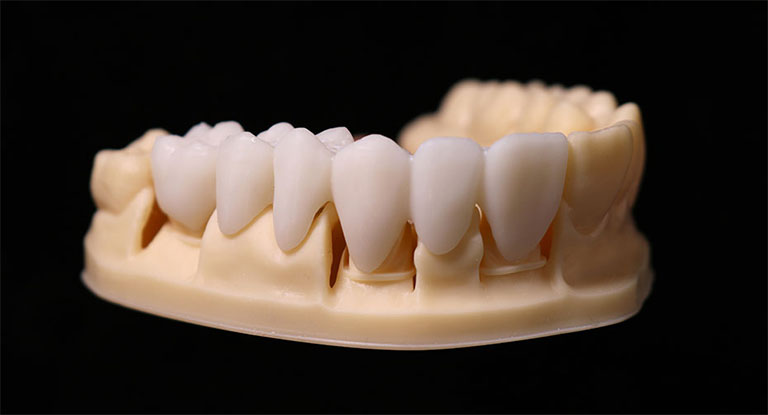If you’ve ever needed a dental crown, you’ve probably worn a temporary crown at some point. These short-term solutions protect your teeth while you wait for your permanent crown to be made. Thanks to 3D printing, temporary crowns today are faster, better-looking, and more comfortable than ever before.
What Is a Temporary Crown?
A temporary dental crown is a tooth-shaped cap that covers a damaged or prepared tooth while a permanent crown is being made. Dentists often recommend it after tooth preparation, root canals, or implant surgery. It helps protect the area, keeps your bite in check, and improves appearance in the meantime.
These crowns are usually made from resin materials and are held in place with temporary crown cement or temporary crown adhesive. Once the permanent crown is ready, the dentist removes the temporary one and places the final crown with stronger, long-lasting dental cement.

Why Are Temporary Crowns Important?
Temporary crowns do a lot more than just fill the gap:
- Protect the prepared tooth: They shield sensitive areas from cold, hot, or acidic foods, which can trigger temporary crown pain if left exposed.
- Prevent tooth movement: Without a crown, surrounding teeth may shift out of position. The crown keeps everything aligned while you wait.
- Improve appearance: Especially if you’re missing a front tooth, a temporary crown avoids the awkwardness of a visible gap.
- Restore basic chewing function: While you should avoid sticky or hard foods, most temporary crowns let you eat soft foods like pasta or rice without issues.
Common Problems with Traditional Temporary Crowns
Before 3D printing, dentists made temporary crowns by hand or in a lab using traditional molds. This method came with several drawbacks:
- Time-consuming: It could take hours or even days to produce a single crown.
- Labor-intensive: Making a crown manually requires skill, precision, and sometimes multiple appointments.
- Inconsistency: The final shape and fit depended heavily on the technician’s expertise.
- Uncomfortable fit: Poor margins or rough edges often led to irritation, and some patients experienced pain after temporary crown placement.
Plus, traditional temporary crown glue could wear off quickly, leading to situations like “my temporary crown came off” mid-meal or during sleep.
How 3D Printing Solves These Issues
Modern 3D printing offers a much faster, more accurate, and reliable alternative. Here’s why more dental clinics are choosing this digital approach:
- Speed: After a digital scan, the design is quickly modeled and printed—no need for physical molds.
- Precision: The digital workflow ensures a perfect fit, reducing discomfort and minimizing temporary crown pain.
- Consistency: Each printed crown is smooth, accurate, and replicable.
- Biocompatibility: Medical-grade materials like IFUN’s 3164 resin ensure a safe, natural-feeling crown with no strange odors or irritation.
- Aesthetic quality: 3D-printed temporary crowns look and feel close to real teeth, making them ideal even for visible front teeth.

What If Your Temporary Crown Falls Off?
If your temporary crown came off, don’t panic. It’s a common issue. Ideally, see your dentist as soon as possible. In the meantime, you can use temporary adhesive for dental crown products (available at most pharmacies) to reattach the crown gently. Never use household glues, as they can damage the tooth or be toxic.
Final Thoughts
Whether you’re waiting for a permanent crown or undergoing a multi-step dental treatment, a temporary crown is more than just a placeholder—it protects your smile, supports healing, and helps you feel normal during the process. And thanks to 3D printing, these crowns are now more reliable and comfortable than ever before.
If you’re a dental clinic or lab looking to upgrade your workflow, digital dentistry solutions—like those from IFUN—can save time, reduce costs, and improve patient satisfaction across the board.

